- Top Late-Sowing Radish Varieties for Abundant Harvest
- 1. French Breakfast
- 2. Cherry Belle
- 3. Easter Egg
- 4. Watermelon
- 5. Black Spanish
- Early Scarlet Gold Radish
- French Breakfast Radish
- Key Features:
- How to Grow:
- Uses
- China Rose Radish
- Characteristics
- Planting and Care
- Uses
- Conclusion
- White Icicle Radish
- Watermelon Radish
- Black Spanish Round Radish
- Key Features:
- Planting:
- Care:
- Harvesting:
- Uses:
- Recipes:
- Conclusion:
- Easter Egg Radish
- Cherry Belle Radish
- How to Grow Cherry Belle Radish
- Tips for Growing Cherry Belle Radish
- “Question-Answer”
- What are some late-sowing radish varieties I can try?
- Can I still plant radishes if it’s late in the growing season?
- What is the advantage of late-sowing radish varieties?
- How do I sow radish seeds late in the season?
- Do late-sowing radish varieties taste the same as early-sowing varieties?
- How long does it take for late-sowing radishes to mature?
- Can I save seeds from late-sowing radishes for the next planting season?
- “Video” Easy trick to keep squash bugs out of your garden- My #1 Organic Tool
If you missed the spring planting season for radishes, don’t worry! There are plenty of radish varieties that can be sown in late summer or early fall, ensuring a bountiful harvest without any worries of premature shoots. Late-sowing radishes are a great option for gardeners who want to enjoy the crisp, spicy taste of radishes well into the cool fall months.
One of the best late-sowing radish varieties is the French Breakfast Radish. Known for its long, slender roots and vibrant red color, this radish variety is perfect for late summer or early fall planting. With a mild, sweet flavor and crispy texture, the French Breakfast Radish is a favorite among radish enthusiasts.
Another excellent late-sowing radish variety is the Cherry Belle Radish. This round, bright red radish has a crisp, white flesh and a deliciously spicy flavor. It is quick to mature, making it a popular choice for gardeners who are short on time or want a fast-growing crop.
If you prefer a milder taste, the White Icicle Radish is a superb option for late-sowing. This long, white radish has a delicate flavor and a crunchy texture. It is perfect for salads, sandwiches, and adding a touch of freshness to any dish.
When sowing late-sowing radishes, it’s important to choose a location that receives at least half a day of sun. Radishes prefer rich, well-draining soil, so be sure to prepare your planting bed by loosening the soil and adding compost or organic matter. Keep the soil consistently moist but not waterlogged, and your radishes will thrive.
Top Late-Sowing Radish Varieties for Abundant Harvest
If you missed the optimal sowing time for radishes, don’t worry! There are still some radish varieties that you can sow late in the season and enjoy a bountiful harvest.
1. French Breakfast
This classic radish variety is perfect for late sowings. French Breakfast radishes are known for their elongated shape and vibrant red color with a white tip. They have a mild and slightly spicy flavor, making them a popular choice for salads and sandwiches.
2. Cherry Belle
Cherry Belle radishes are another great option for late sowings. These round, bright red radishes have a crispy texture and a mild peppery taste. They mature quickly, usually in about 22 days, making them perfect for gardeners who want a fast-growing radish.
3. Easter Egg
If you’re looking for some color in your late-sowing radish patch, Easter Egg radishes are the way to go. These radishes come in a mix of shades, including pink, purple, red, and white. They have a mild flavor and a crunchy texture, making them a fun addition to salads and vegetable platters.
4. Watermelon

Watermelon radishes are a unique variety that is sure to impress. These radishes have a green and white exterior, but when you slice them open, they reveal a vibrant pink or red center that resembles a watermelon. They have a mild, sweet flavor and a crisp texture, making them perfect for fresh eating.
5. Black Spanish
If you prefer a slightly spicier radish, Black Spanish radishes are a great choice. These round radishes have a black skin and a crisp white flesh. They have a strong, peppery flavor that intensifies as they mature. Black Spanish radishes are great for adding a kick to salads, sandwiches, and pickles.
When sowing these late-sowing radish varieties, make sure to follow the instructions on the seed packet regarding depth and spacing. Water regularly and keep the soil moist to ensure good germination and growth. With proper care, you’ll be enjoying a delicious harvest of radishes in no time!
Early Scarlet Gold Radish
The Early Scarlet Gold Radish is a stunning variety that is perfect for late-sowing. It is known for its vibrant red skin and golden-yellow flesh. This radish has a crisp and juicy texture, making it a delicious addition to salads or as a snack on its own. It has a mild and slightly sweet flavor, with just a hint of spiciness.
One of the best things about the Early Scarlet Gold Radish is its quick growing time. It can be sown as late as September and still produce a crop within a month. This makes it an ideal choice for those who want to extend their radish harvest into the late fall.
When planting the Early Scarlet Gold Radish, it is important to choose a sunny spot with well-drained soil. This radish variety prefers cooler temperatures, so it is best to sow it in the early spring or late summer. The seeds should be sown directly into the ground, about half an inch deep and one inch apart.
After sowing the seeds, be sure to water them regularly to keep the soil moist. Within a week or two, you will start to see the radish seedlings emerge from the ground. As the radishes grow, thin them out to about two inches apart to allow for proper root development.
The Early Scarlet Gold Radish is a versatile vegetable that can be used in a variety of dishes. Its beautiful color adds a pop to any salad or stir-fry. It can also be pickled or roasted for a unique twist on a classic radish flavor.
In conclusion, the Early Scarlet Gold Radish is a fantastic variety for late-sowing. Its quick growing time and vibrant color make it a popular choice among gardeners. Whether enjoyed raw or cooked, this radish is sure to be a hit in any kitchen.
French Breakfast Radish
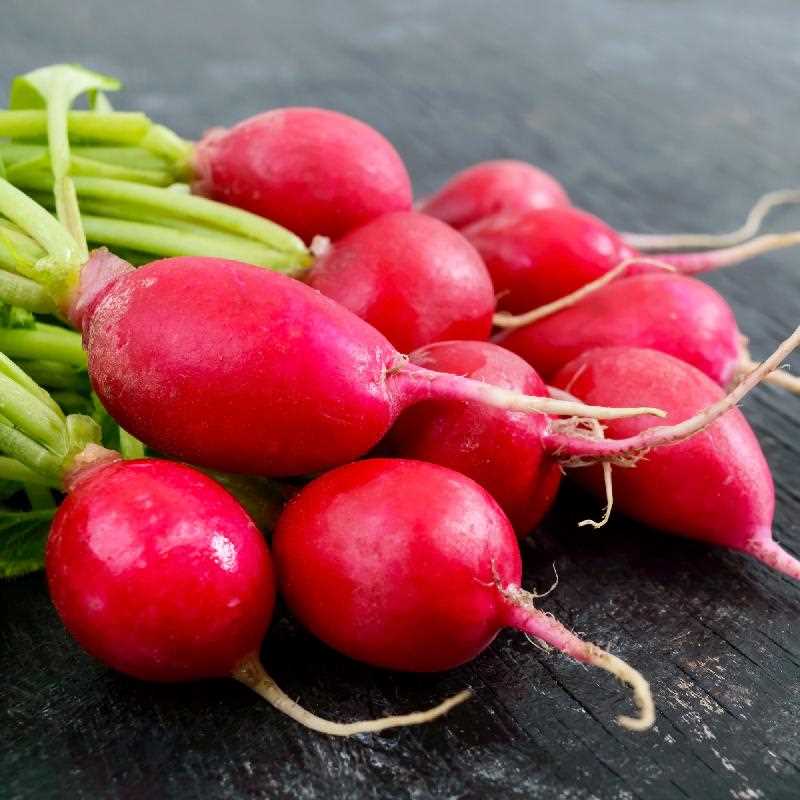
The French Breakfast radish is a popular variety known for its mild and slightly sweet flavor. It is characterized by its elongated shape, which tapers to a sharp point at one end. The radish typically measures around 3-4 inches in length.
French Breakfast radishes have a vibrant red skin that fades to white towards the tip. The skin is thin and tender, making it easy to bite into. The flesh of the radish is crisp and juicy, providing a refreshing texture.
This variety is best grown in cooler climates and is a popular choice for late sowing. It matures quickly, usually within 3-4 weeks, making it a great option for gardeners looking for a fast-growing radish.
Key Features:
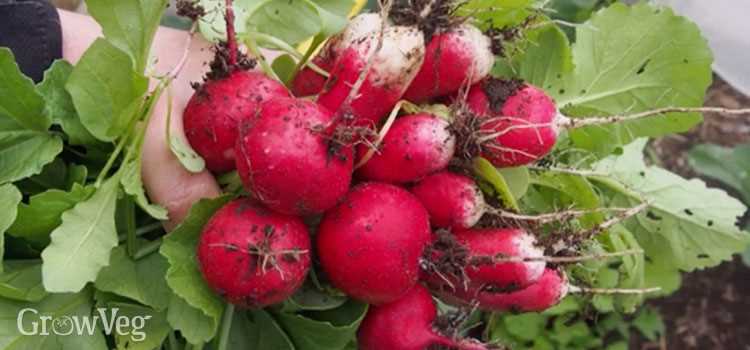
- Mild and slightly sweet flavor
- Elongated shape with a tapered point
- Vibrant red skin that fades to white
- Thin and tender skin
- Crisp and juicy flesh
- Matures quickly, usually within 3-4 weeks
How to Grow:
French Breakfast radishes prefer cool temperatures and perform best in well-draining soil. Sow the seeds directly into the garden bed or container, about half an inch deep and one inch apart. Space the rows about 12 inches apart to allow room for the radishes to grow.
Keep the soil consistently moist throughout the growing season to promote even growth and prevent the radishes from becoming woody. Thin the seedlings when they reach about an inch tall, leaving the strongest plants spaced about 2-3 inches apart.
French Breakfast radishes are quick to mature and are typically ready to harvest within 3-4 weeks. To harvest, gently pull the radishes from the ground by grasping the foliage near the base of the plant and giving a slight tug.
Uses
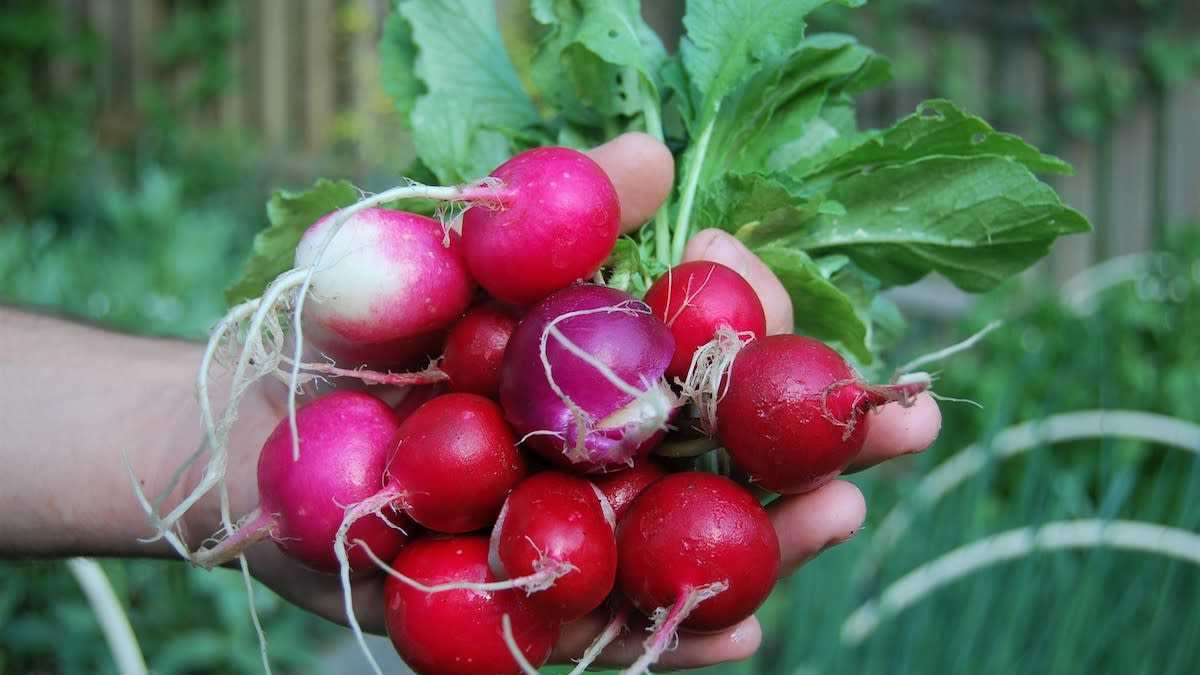
The mild and slightly sweet flavor of French Breakfast radishes makes them a versatile ingredient in the kitchen. They can be enjoyed raw in salads, sliced and added to sandwiches, or pickled for later use. The radishes also work well as a garnish for various dishes, adding a pop of color and flavor.
China Rose Radish
The China Rose Radish is a popular variety of late-sowing radish that is known for its attractive, rose-colored skin and crisp texture. This radish variety is well-suited for late sowings because it has a relatively short maturity time, usually taking around 25-30 days to reach full size.
Characteristics
- Size: China Rose Radish typically grows to a size of about 2-3 inches in diameter.
- Shape: The radish is generally round or oval in shape, with a slightly pointed tip.
- Color: The skin of the China Rose Radish is a vibrant, rosy pink color, which is where it gets its name.
- Flavor: This variety of radish has a mild, slightly spicy flavor that is enjoyable to eat raw or cooked.
- Texture: The China Rose Radish has a crisp and crunchy texture that adds a refreshing element to salads and other dishes.
Planting and Care
When planting China Rose Radish, it is best to do so in loose, well-draining soil that has been amended with organic matter. Sow the seeds directly into the garden bed, spacing them about 1 inch apart and covering them with a thin layer of soil.
Water the radish plants regularly, keeping the soil evenly moist but not waterlogged. Thin the seedlings once they have sprouted, leaving about 2-3 inches of space between each plant. This will allow the radishes to grow to their full size without overcrowding.
Harvest the China Rose Radish when they have reached their desired size, usually around 25-30 days after planting. Simply loosen the soil around the radishes with a garden fork or trowel and gently pull them out of the ground.
Uses
The China Rose Radish is a versatile vegetable that can be enjoyed in a variety of ways. It can be eaten raw, either on its own or in salads, for a refreshing and crunchy snack. The radish can also be cooked, either roasted, sautéed, or pickled, to add a unique flavor and texture to dishes.
In addition to being delicious to eat, the China Rose Radish is also a beautiful vegetable that can be used as a decorative element in culinary presentations. Its vibrant pink color adds a pop of color to dishes and makes it an attractive garnish.
Conclusion
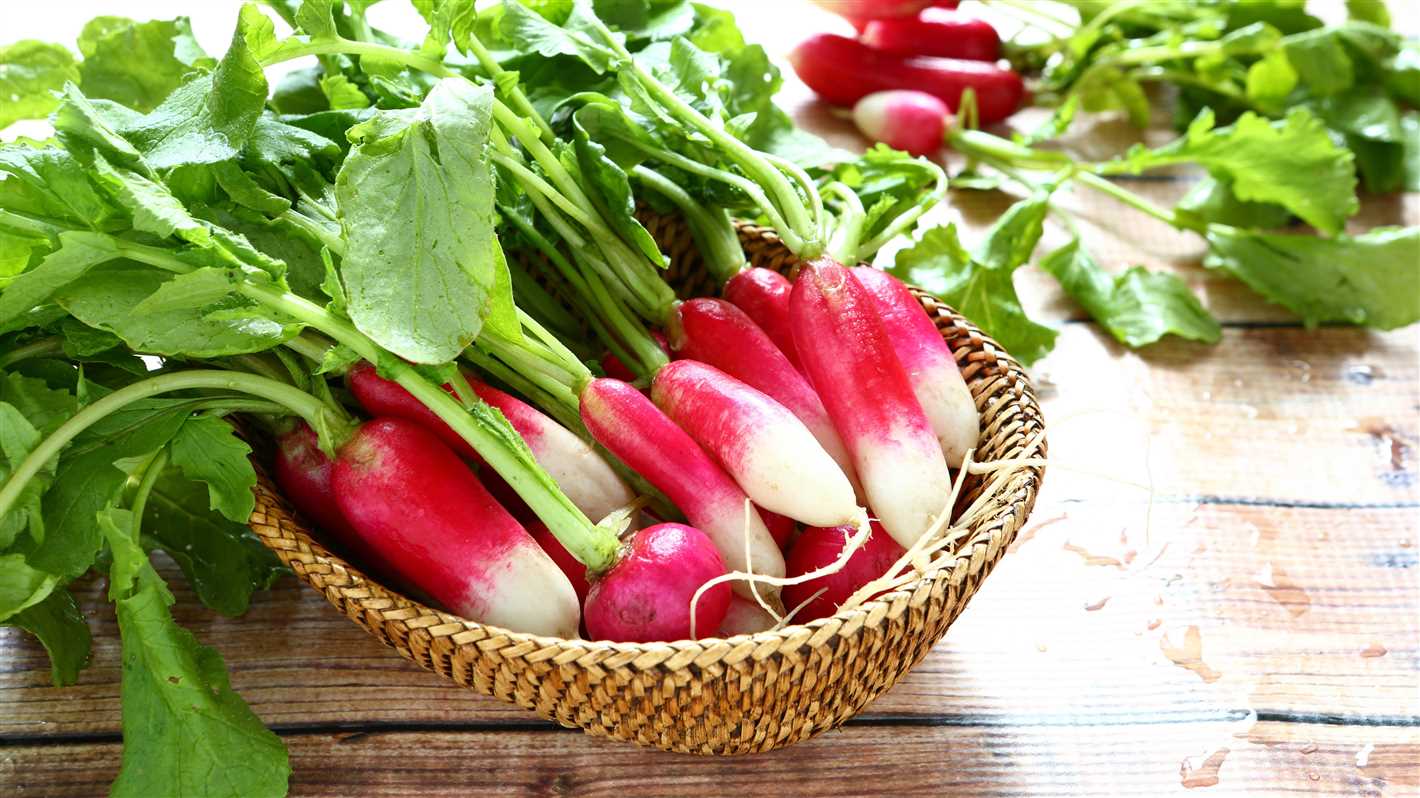
If you are looking for a late-sowing radish variety that is not prone to shooting or bolting, the China Rose Radish is an excellent choice. Its attractive appearance, crisp texture, and mild flavor make it a versatile and enjoyable vegetable to grow and eat. Try planting some China Rose Radishes in your garden this season and enjoy their vibrant pink color and delicious taste!
White Icicle Radish
The White Icicle Radish is a popular variety of radish known for its long, tapered shape and sharp, peppery flavor. It is one of the best late-sowing radish varieties as it can be sown later in the season without worrying about it bolting or producing shoots.
This radish variety has a crisp and crunchy texture, making it great for fresh eating and adding a zing to salads and sandwiches. It has a white skin and a white interior with a mild, yet spicy taste. The radish roots can grow up to 6 inches long, which makes them a visually appealing addition to any dish.
White Icicle Radishes are easy to grow and can be sown directly in the garden bed. They prefer well-drained soil and full sun, but can tolerate some shade. The plants should be spaced about 1 inch apart to allow enough room for the roots to develop. It is important to keep the soil consistently moist during the growing period to ensure the radishes develop properly.
These radishes mature relatively quickly, usually within 25-30 days. Once the radishes reach a desirable size, they can be harvested by gently pulling them out of the ground. It is best to harvest them when they are still young and tender for the best flavor and texture.
White Icicle Radishes are not only delicious but also packed with nutrients. They are a good source of vitamin C, calcium, potassium, and fiber. Adding these radishes to your diet can help boost your immune system, improve digestion, and support healthy bones.
If you are looking for a variety of radish that can be sown later in the season and doesn’t produce shoots, the White Icicle Radish is a fantastic choice. Its unique shape, peppery flavor, and nutritional benefits make it a must-have in any vegetable garden.
Watermelon Radish
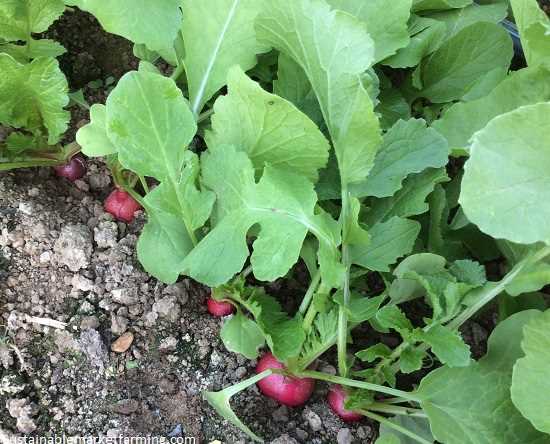
The Watermelon Radish is a beautiful heirloom variety known for its vibrant colors and unique flavor. It gets its name from its appearance, as it has a green exterior with a pink or red interior that resembles a watermelon.
This radish variety is a favorite among home gardeners and chefs for its crisp texture, mild taste, and striking color. It adds a pop of color to salads, sandwiches, and other dishes, making them visually appealing.
Not only is the Watermelon Radish visually stunning, but it also offers a range of health benefits. It is rich in vitamins A, C, and B6, as well as minerals like potassium and calcium. It is also high in fiber, which supports digestion and promotes satiety.
To grow Watermelon Radish, you can sow the seeds directly in the garden or in containers. It prefers well-draining soil and full sun exposure. The radishes typically mature in 55-60 days and can be harvested when they reach a size of 2-4 inches in diameter.
Below are some key features of the Watermelon Radish:
- Shape: Round to oblong shape, similar to a small turnip
- Exterior Color: Green with white tips
- Interior Color: Bright pink or red, resembling a watermelon
- Flavor: Mild and slightly peppery
| Planting Depth | Spacing | Days to Maturity |
|---|---|---|
| 1/2 inch | 2-3 inches apart | 55-60 days |
The Watermelon Radish is a fantastic choice for late sowings due to its resistance to bolting. It can be planted in late summer or early fall and harvested before the first frost. This variety is less likely to develop shoots and remains crispy and delicious.
Bring some color and flavor to your garden and kitchen with the Watermelon Radish. Its unique appearance and taste will make it a standout addition to any dish.
Black Spanish Round Radish
The Black Spanish Round Radish is a popular variety of radish that is known for its round shape and dark black skin. This radish has a crunchy texture and a spicy, peppery flavor that is loved by many gardeners. It is an excellent choice for late-sowing as it is more resistant to bolting than other varieties.
Key Features:
- Round shape
- Dark black skin
- Crunchy texture
- Spicy, peppery flavor
- Resistant to bolting
Planting:
The Black Spanish Round Radish can be sown directly in the garden from late summer to early fall. Make sure to choose a location with well-drained soil and full sun. Sow the seeds about 1/2 inch deep and 1 inch apart. Thin the seedlings to 2-4 inches apart when they are about 1 inch tall.
Care:
Water the radishes regularly to keep the soil evenly moist. Avoid overwatering as it can cause the radishes to become pithy and hollow. Weed the garden regularly to prevent competition for nutrients and space.
Harvesting:
The Black Spanish Round Radish can be harvested when the radishes are about 1-2 inches in diameter. Gently pull the radishes out of the ground, taking care not to damage the roots. Remove the leaves and store them in the refrigerator for up to a week.
Uses:
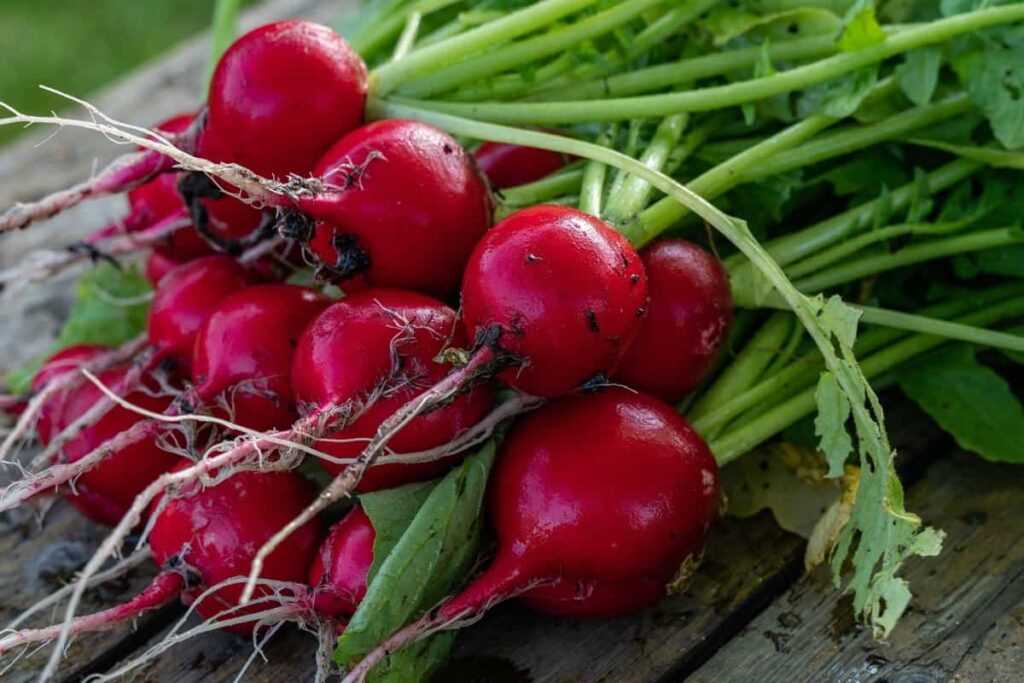
The Black Spanish Round Radish is a versatile vegetable that can be enjoyed in a variety of ways. It can be eaten raw in salads, sliced and added to sandwiches, or pickled for a tangy side dish. The spicy flavor of this radish adds a kick to any dish.
Recipes:
Here are a few recipe ideas to help you make the most of your Black Spanish Round Radishes:
- Radish Salad: Thinly slice the radishes and toss them with mixed greens, cucumber, and a simple vinaigrette.
- Radish and Cream Cheese Sandwich: Spread cream cheese on bread, top with sliced radishes, and season with salt and pepper.
- Pickled Radishes: Slice the radishes and place them in a jar with vinegar, sugar, and spices. Let them sit in the refrigerator for a few days before enjoying.
Conclusion:
Black Spanish Round Radish is a fantastic late-sowing radish variety that offers a unique flavor and texture. Its resistance to bolting makes it a reliable choice for gardeners looking to extend their radish harvest into the fall. Whether eaten raw or pickled, this radish is sure to add a spicy kick to your meals.
Easter Egg Radish
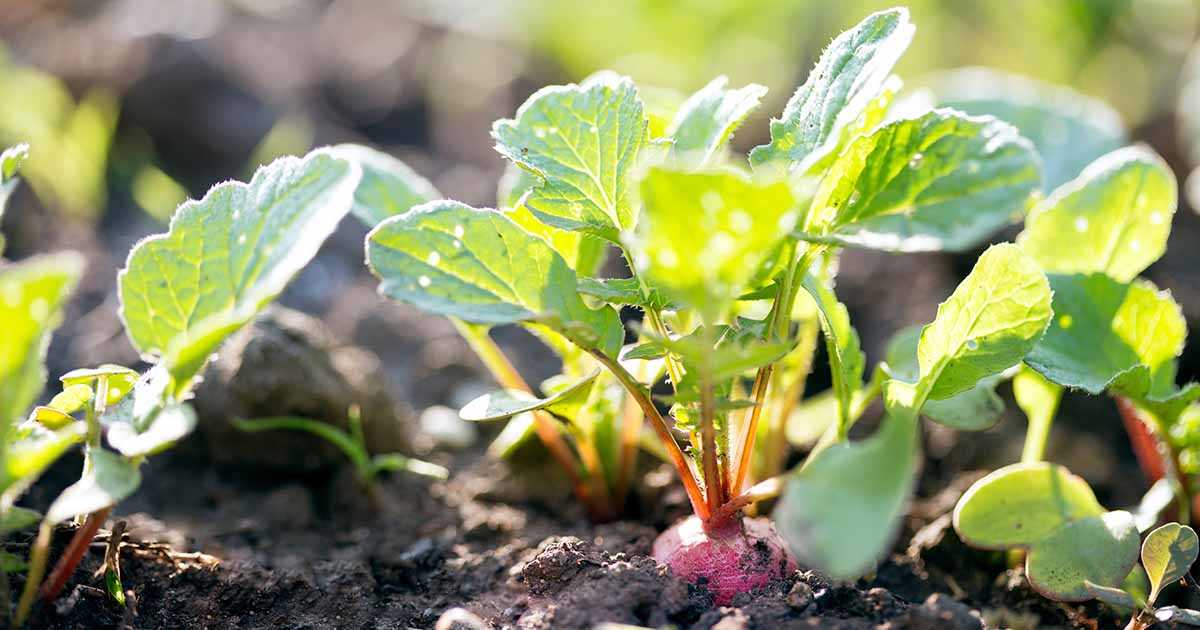
The Easter Egg Radish is a popular variety that is known for its vibrant colors and sweet flavor. It gets its name from its round shape, which resembles an Easter egg. This radish is perfect for late-sowing, as it matures quickly and has a short growing period.
Growing Information:
- Plant the Easter Egg Radish seeds in well-draining soil, about half an inch deep.
- Space the seeds about one inch apart.
- Water regularly to keep the soil moist, but not soaked.
- The radishes will be ready to harvest in about 25-30 days.
Benefits of Easter Egg Radish:
- The Easter Egg Radish is an excellent source of vitamin C and other essential nutrients.
- It adds a pop of color to salads, making them visually appealing.
- It has a subtle, sweet flavor that pairs well with various dishes.
Culinary Uses:
- Easter Egg Radishes can be enjoyed raw, sliced into salads or used as a garnish.
- They can be pickled for a tangy and crunchy addition to sandwiches and tacos.
- They can be roasted or sautéed to bring out their natural sweetness.
Final Thoughts:
The Easter Egg Radish is a delightful addition to any garden. Its vibrant colors, quick maturation, and sweet flavor make it a favorite amongst both beginner and experienced gardeners. Give this variety a try for a bountiful harvest of delicious and visually stunning radishes.
Cherry Belle Radish
- Latin name: Raphanus sativus
- Growing season: 22-27 days
- Color: bright red
- Taste: crisp, mild, and slightly sweet
Cherry Belle radish is a popular choice among gardeners due to its fast growth and excellent flavor. It is a small to medium-sized radish with a round shape and a bright red skin. The flesh is white and has a crisp, juicy texture.
This variety is known for its mild and slightly sweet flavor, making it a great addition to salads, sandwiches, and other dishes. It can be eaten raw or cooked, and its vibrant red color adds a pop of color to any dish.
Cherry Belle radishes are quick to mature, typically taking between 22 and 27 days from sowing to harvest. They are well-suited for late-sowing, as they can be planted later in the growing season and still produce a good crop.
How to Grow Cherry Belle Radish
To grow Cherry Belle radishes, follow these steps:
- Choose a sunny location in your garden with well-draining soil.
- Prepare the soil by removing any weeds and loosening it with a garden fork or tiller.
- Sow the seeds directly into the soil, planting them about 1/2 inch deep and 1 inch apart.
- Water the soil thoroughly after planting to ensure good germination.
- Maintain consistent moisture throughout the growing season by watering regularly.
- Harvest the radishes when they reach the desired size, typically around 1 inch in diameter.
Tips for Growing Cherry Belle Radish
- Thin out the seedlings after they have germinated to allow room for proper growth.
- Protect the radishes from pests, such as slugs and snails, by using organic pest control methods.
- Consider succession planting to ensure a continuous harvest throughout the season.
- Store harvested radishes in the refrigerator to keep them fresh and crispy.
With its quick growth, delicious flavor, and vibrant color, Cherry Belle radish is a fantastic choice for late-sowing. Give it a try in your garden and enjoy the fresh, crisp taste of homegrown radishes!
“Question-Answer”
What are some late-sowing radish varieties I can try?
Some late-sowing radish varieties you can try are French Breakfast, Cherry Belle, and White Icicle.
Can I still plant radishes if it’s late in the growing season?
Yes, you can still plant radishes late in the growing season. There are specific varieties that are more suitable for late sowings.
What is the advantage of late-sowing radish varieties?
The advantage of late-sowing radish varieties is that they are more resistant to bolting and going to seed prematurely, resulting in a better harvest.
How do I sow radish seeds late in the season?
To sow radish seeds late in the season, prepare the soil by removing any weeds or debris. Loosen the soil with a garden fork, then sprinkle the seeds evenly across the soil surface. Cover the seeds lightly with soil, water gently, and keep the soil moist until the seeds germinate.
Do late-sowing radish varieties taste the same as early-sowing varieties?
Yes, late-sowing radish varieties generally taste the same as early-sowing varieties. The difference lies in their ability to withstand warmer temperatures and longer days without bolting.
How long does it take for late-sowing radishes to mature?
Late-sowing radishes typically take around 25-30 days to mature, depending on the variety. It’s important to keep an eye on their growth and harvest them promptly when they reach the desired size.
Can I save seeds from late-sowing radishes for the next planting season?
Yes, you can save seeds from late-sowing radishes for the next planting season. Allow the radishes to fully mature and go to seed, then collect the seeds and store them in a cool, dry place until you’re ready to sow them again.







